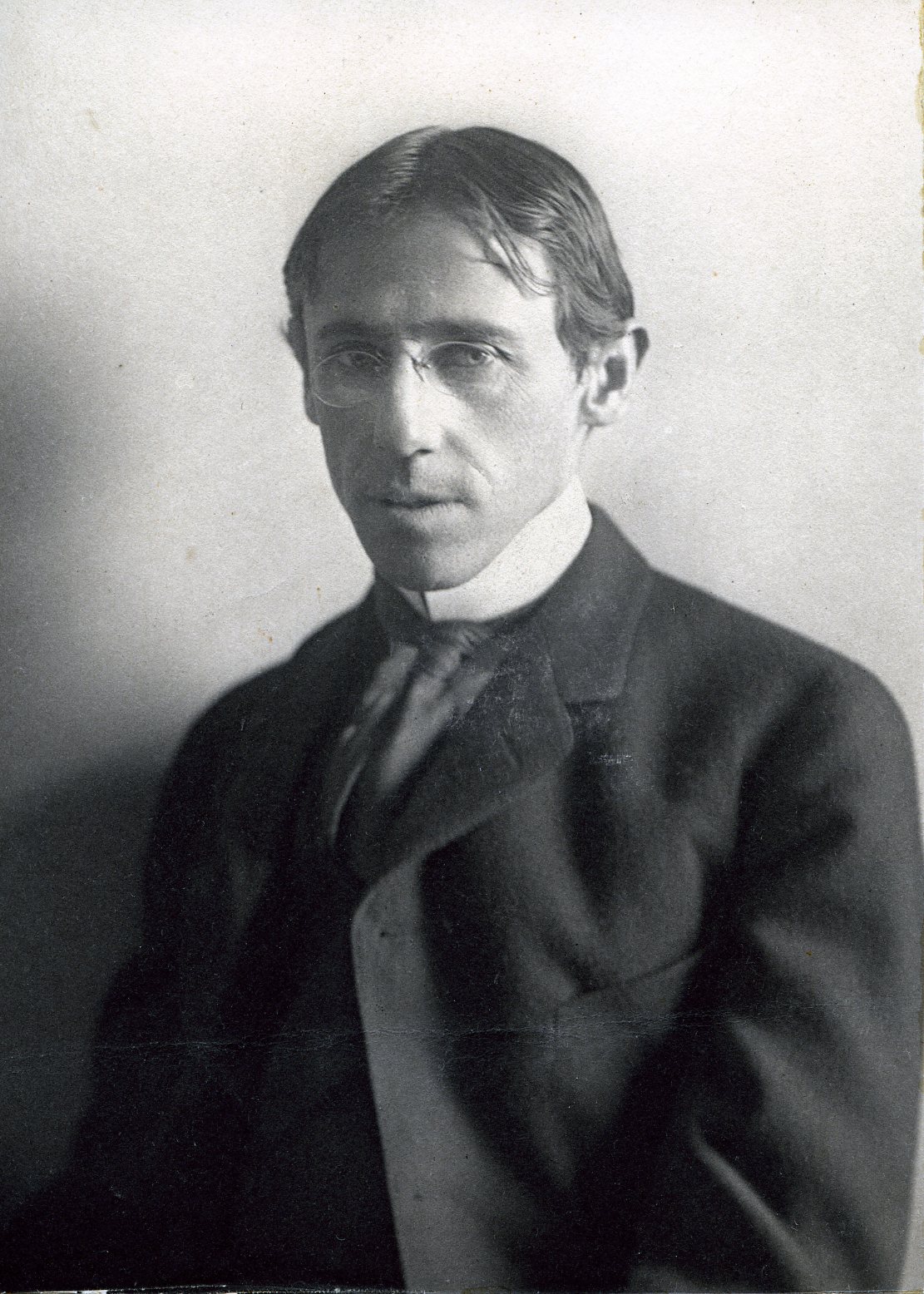Member Directory,
1847 - 1922
August F. Jaccaci
Art Editor/Artist
Centurion, 1896–1930
Stephen W. Van Schaick and Will H. Low
Fontainebleu, France
Neuf-de-Grasse, France
Age thirty-nine

Century Memorial
Once in a while, a personality appears in the Century membership that carries the imagination back to another social era. August Florian Jaccaci was a loyal Centurion in his New York days. His acquaintance was wide and of the best, in the Century itself as with outside artists, collectors and authors. His conversation is a well-remembered tradition among older members. But there was always a delightful sense that Jaccaci had somehow stepped from the pages of romantic fiction—though perhaps it would have been difficult to imagine what descriptive writer could have pictured him. Disraeli’s exotic imagination might have drawn the portrait in “Coningsby” or “Vivian Grey.” For his own time, Jaccaci was altogether an original.
His life-story was itself a romance of adventure; curiously varied by artistic work, both critical and productive, which was extremely practical. Jaccaci wielded a spade with the archeologists at Carthage, wandered thence to the Sahara and the Arab tribes, strayed into the Congo, crossed Mexico on foot when it was over-run by bandits. It was easy to believe that a gypsy strain had come to him from his Hungarian ancestry; an impression which gained force, not only from his early nomad instincts and his facility of speech in many languages—always with a trace of accent foreign to the tongue in which he spoke—but from the flash of his dark eyes in conversation, and the expressive features which would not have been misplaced in the Romany Rye.
With all this, Jaccaci won high repute as an accomplished decorative painter, whose work was to be found in the church at Martinique, in the Havana opera-house, in the capitol at Minneapolis, and in many private mansions. He achieved a success, which would have been incongruous for a wandering adventurer, in developing and supervising new artistic talent for the illustrated magazines. In that undertaking, indeed, he was a rigid taskmaster; it used to be said that the younger artists whom he subjected to his discipline were divided in mind between hate and admiration. Yet this was the sympathetic spirit that threw to the winds both roving instinct and artistic work when the war broke out in 1914, and thereafter devoted all his time and energy to afflicted France and the “Society for the Protection of Children of the Frontier.”
Alexander Dana Noyes
1931 Century Association Yearbook
Related Members
Member Directory Home-
 Frank Austin CarleEditor/Commercial AdviserCenturion, 1899–1930
Frank Austin CarleEditor/Commercial AdviserCenturion, 1899–1930 -
 Norman HapgoodEditorCenturion, 1906–1937
Norman HapgoodEditorCenturion, 1906–1937 -
 Will H. LowArtistCenturion, 1887–1932
Will H. LowArtistCenturion, 1887–1932 -
 John S. PhillipsPublisherCenturion, 1909–1949
John S. PhillipsPublisherCenturion, 1909–1949 -
 George D. PrattRailroad/ConservationistCenturion, 1913–1935
George D. PrattRailroad/ConservationistCenturion, 1913–1935 -
 Frederick R. SwiftLawyerCenturion, 1911–1923
Frederick R. SwiftLawyerCenturion, 1911–1923 -
 Stephen W. Van SchaickArtistCenturion, 1892–1901
Stephen W. Van SchaickArtistCenturion, 1892–1901





